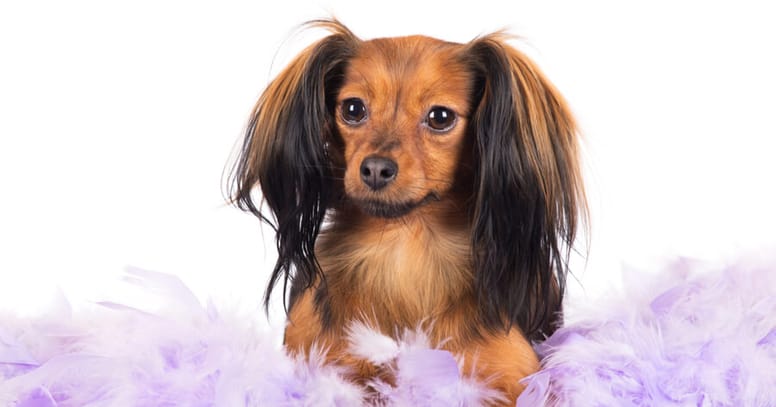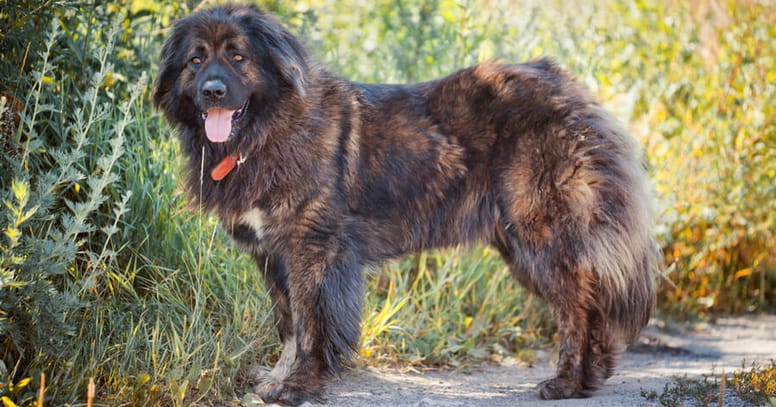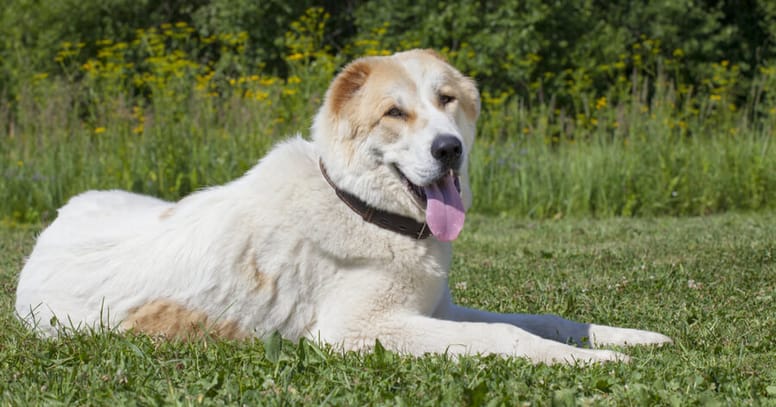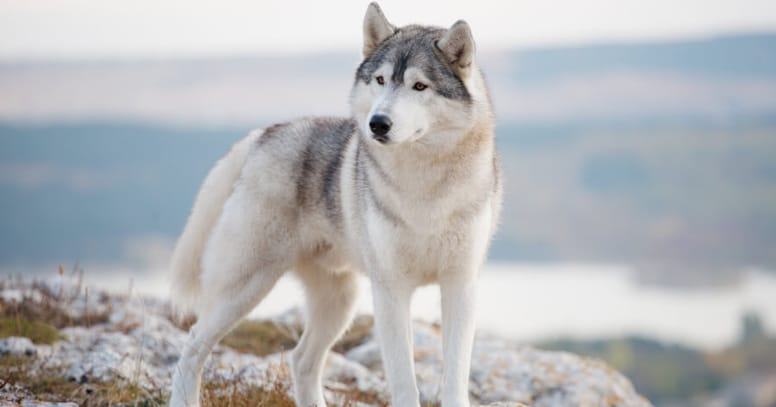Russia is the largest country in the world. In fact, it covers 11 different time zones. Some say that when the East of Russia is having dinner, the West is having breakfast! With a country that big, there’s a lot of potential to create a variety of dog breeds.
That’s why Russia might just have the greatest selection of dog breeds in the world. Looking for a breed that excels at dog sports? Russia has those. Looking for a breed that’ll do well in obedience training? Russia has those too. Want a guarding dog, or perhaps a family pet? Don’t worry, Russia has those. Whatever the type of dog you are looking for, you are sure to find a great match in our list of Russian dog breeds.
Black Russian Terrier

The Black Russian Terrier is a large dog that resembles the Giant Schnauzer. Commonly known as “Blackies” or “BRTs”, these gorgeous dogs come in a single striking colour: black.
Black Russian Terriers are extremely intelligent and therefore excel at obedience training.
They were, however, originally bred as guarding dogs, so they have a protective instinct about them. They require experienced dog owners who will be able to provide them with the training, early socialisation, and exercise they need to become well-behaved, well-rounded pets.
Russian Toy Terrier

The Russian Toy Terrier, or Russkiy Toy, is a small sized lap dog who’s main physical feature is the feathering on the ears. Unlike most Russian dog breeds, these adorable little pooches were originally bred as companions for royalty.
As such, the Russian Toy is an extremely loyal and affectionate companion. They love attention and won’t hesitate to ask for more if they feel they aren’t getting enough. Russian Toys, like many other dogs of their size, don’t necessarily realise just how little they are. Care must be taken when out on walkies and meeting other, bigger dogs.
Caucasian Shepherd Dog

The Caucasian Shepherd Dog, also known as the Russian Bear Dog or the Russian Ovcharka, is a large dog which was originally bred as a livestock herding and guarding dog.
Due to their history working alone with their shepherd, Caucasian Shepherds are a one-person type of dog. Once they bond with their owner, they will remain loyal, protective, and loving until the very end. They may act aloof with other members of the family though, and can be excessively wary of strangers. As such, these large Russian dogs do best with experienced and single owners.
Central Asian Shepherd Dog

The Central Asian Shepherd Dog, also known as the Alabai and the Central Asian Ovcharka, is very close in lineage to the Caucasian Shepherd Dog.
Much like their cousins, these massive canines can make effective guarding dogs but they can be difficult to handle. They require an experienced dog owner and do better in childless homes. Like the Caucasian Shepherd, these dogs are prone to a variety of health issues linked to their large size, including elbow and hip dysplasia.
Siberian Husky

Siberian Huskies were originally working dogs, bred by the Chukchi people to pull sleds 4,000 years ago! Today, Siberian Huskies are still the quintessential sled dog breed. In fact, they love nothing more than to be out in the open, running, and pulling - no matter the weather conditions.
Despite their popularity, Siberian Huskies require a very specific type of owner; one that will have both the time and energy to cater to their exercise needs. In addition, Siberian Huskies have selective hearing so require patience and consistency during the training process. With that thick coat, they are also one of the heaviest shedders in the dog world, so neat freaks, beware!
Samoyed

The Samoyed was originally bred as an all-purpose dog for the Samoyedic people of Siberia around 3,000 years ago. Capable of hunting, pulling sleds, and herding reindeer, these adorable white dogs also proved to be incredibly affectionate.
This is why they remain to this day a very popular breed! Also known as “smiling Sammies” due to their wide, endearing ‘smiles’, these gorgeous long-haired dogs require fastidious grooming. They also need lots of exercise to be healthy and happy. They are, however, wonderful family pets who do well with adults and children alike.
Borzoi

“Borzoi” in Russian roughly translates to ‘fast’, and boy are these dogs fast! Able to run at an incredible 36mph, these regal looking sighthounds were originally bred to hunt wolves in 9th and 10th century Russia.
Though not a common breed of pet today, these beautiful Russian dogs can make wonderful companions. Like most sighthounds, they are very calm inside the house and have even been described as ‘cat-like’. They do like to stretch out those long legs though, and due to their hunting instinct, these dogs are prone to running off and not looking back. It is therefore recommended to exercise them in safe, fenced areas only.
East Siberian Laika

The East Siberian Laika is one of four Laika breeds including the Karelo-Finnish Laika, the Russo-European Laika, and the West Siberian Laika. who are very closely related to the wolf. Originally bred to hunt both small and large game, these powerful dogs are not for the faint of heart.
East Siberian Laikas can bond very closely with their ‘pack’, but they are also very independent and territorial in nature. They require experienced owners who will take the time to socialise them early, work continuously on their obedience training, and exercise them enough to meet their high-energy needs. For the right owner, an East Siberian Laika can certainly be a loyal companion.
West Siberian Laika

Much like their Eastern cousins, West Siberian Laikas are working dogs that were originally bred to hunt.
West Siberian Laikas require an experienced owner who will be able to curb their territorial and hunting instincts to avoid incidents with other dogs and small animals. As high-energy dogs, they do best in rural settings with an owner who will not only be able to exercise them every day, but also provide them with mental activities to keep them busy. A bored Laika is a destructive Laika!
Russo-European Laika

The Russo-European Laika is a primitive hunting breed specialised in ‘treeing’ game - meaning they would chase game up trees where they could be easily shot down by their master.
Much like other Laikas, Russo-European Laikas are high-energy and require lots of exercise. Though fiercely loyal to their family members, they are territorial and wary of strangers, so need careful training and socialisation. Additionally, the term “barking up the wrong tree” literally comes from the Laika’s method of hunting - so while you’re sure to have an effective guarding dog at home, you’re also in for lots of noise!
So what do you think? Which Russian dog breed was made for you?



